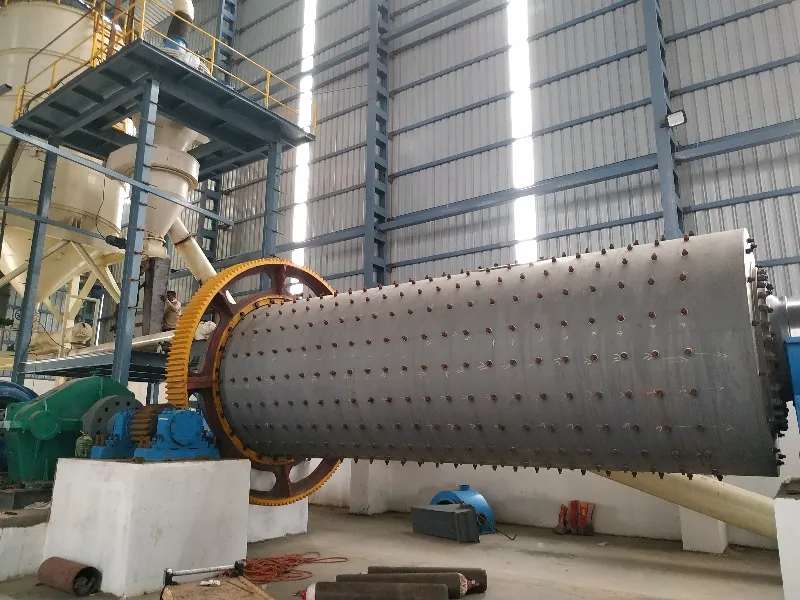Calcium carbonate (CaCO₃) is one of the most widely used inorganic mineral powders today. With abundant resources, low cost, and excellent performance, it is extensively applied in plastics, rubber, paper, coatings, building materials, and other industries. As downstream industries demand higher product performance, calcium carbonate powders must not only achieve specific particle size ranges but also maintain stable distribution and excellent dispersibility. The ball mill classifier system for calcium carbonate is the key technology to achieve these goals.
Process Principle of the Ball Mill Classifier System for Calcium Carbonate

Pre-treatment System
- Jaw crusher + air separator to remove impurities from raw materials
- Variable frequency feeder ensures feed rate fluctuation within ±3%
Main System
- Ball Mill: Responsible for grinding. The impact and friction of grinding media reduce calcium carbonate to the required particle size.
- Classifier: Based on aerodynamic principles, powders are precisely classified. The turbo classifier (rotational speed adjustable between 800–3000 rpm) ensures accurate particle size distribution.
- Powder Collection & Dedusting System: Multi-stage cyclone separators + bag filters (capture efficiency ≥99.8%) keep the environment clean and recover ultrafine powders.
This system features continuous production, controllable particle size, and low energy consumption, making it the mainstream process for large-scale and fine calcium carbonate powder production.
Key Advantages
Precise Particle Size Control: D50 adjustable between 2–20 μm, with narrow particle size distribution to meet diverse industry requirements.
High Capacity: Single production line capacity up to 1–50 t/h, suitable for industrial-scale production.
Energy Optimization: 30%–40% lower energy consumption compared to traditional milling systems.
Superior Product Performance: Significant increase in specific surface area, with improved dispersion in plastics and coatings.
Optional Surface Modification System: Enables simultaneous grinding and modification, enhancing downstream application performance.
Application Fields and Target Particle Sizes
| Application Field | Target Particle Size (D50) | Recommended Configuration | Core Indicators |
| Plastic Fillers (PVC, PE, PP) | 2–5 μm | Ball mill + classifier + modifier | High whiteness, low oil absorption, good dispersibility |
| Rubber Products | 2–5 μm | Ball mill + classifier | Improved wear resistance and elasticity |
| Coatings | 2–10 μm | Ball mill + precision classifier | High covering power, stable dispersion |
| Paper Making | 5–15 μm | Ball mill + classifier | Enhanced smoothness and whiteness |
| Artificial Stone / Building Materials | 10–45 μm | Ball mill (standalone) | High hardness, low cost |
Other Application Scenarios:
- Automotive Primer: D50 = 0.8 μm, oil absorption ≤28 g/100 g, replaces up to 30% of titanium dioxide
- Biodegradable Plastics: Particle size CV ≤15%, activation rate ≥95%, tensile strength of products increased by 40%
Epic Powder
The ball mill classification production line is a proven solution for industrial-scale calcium carbonate production. It ensures an excellent balance between particle size control, capacity, energy efficiency, and product performance.
- For applications requiring large-scale, stable-quality calcium carbonate, the ball mill classification system is the most economical and practical choice.
- When combined with surface modification technology, it significantly enhances calcium carbonate’s performance in plastics, rubber, and coatings.
With over 20 years of expertise in powder engineering, Epic Powder provides one-stop solutions ranging from design and equipment to turnkey projects. Through customized ball mill classification production lines, we help clients produce high-performance calcium carbonate powders and enhance their market competitiveness.
